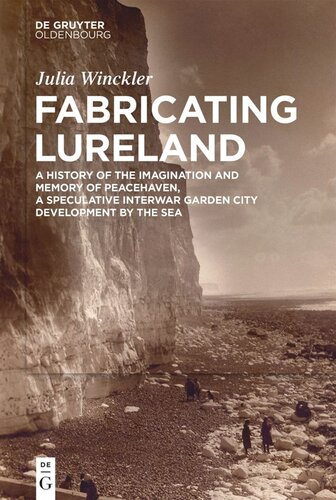

Most ebook files are in PDF format, so you can easily read them using various software such as Foxit Reader or directly on the Google Chrome browser.
Some ebook files are released by publishers in other formats such as .awz, .mobi, .epub, .fb2, etc. You may need to install specific software to read these formats on mobile/PC, such as Calibre.
Please read the tutorial at this link: https://ebookbell.com/faq
We offer FREE conversion to the popular formats you request; however, this may take some time. Therefore, right after payment, please email us, and we will try to provide the service as quickly as possible.
For some exceptional file formats or broken links (if any), please refrain from opening any disputes. Instead, email us first, and we will try to assist within a maximum of 6 hours.
EbookBell Team

5.0
108 reviewsThrough the analysis of surviving archival traces, this book constructs a history of the imagination and memory of the town of Peacehaven. Built as a speculative development atop iconic chalk cliffs on the Sussex Coast and marketed as a garden city by the sea, the estate quickly attracted adverse publicity. Influential voices such as the Bloomsbury group’s Virginia and Leonard Woolf, architect and writer Clough Williams-Ellis and the Campaign for the Protection of Rural England soon began to criticise it as a blot on the rolling, pastoral downland. Instead of reading and appraising Peacehaven’s story in a polarized way, this book breaks new ground by critically interpreting visual representations and commissioned photographs of the Estate and re-evaluating propositions from its inception, which aspired to secure improved public health and home ownership in direct response to the negative impact of industrialization and WWI.
Focusing on the interwar period and tracing mutating agendas, the book investigates contested marketing and construction narratives through Histoire Croisée methodology and its intercrossings with memory and the imagination. By combining visual and creative research methods with oral history, multi-layered narratives of place come into focus. The study tracks the visual programme of the developer’s in-house magazine, Peacehaven Post, alongside previously underexplored blueprints, photographs, postcards and promotional guidebooks, and considers the garden city narrative as a form of social Utopia. Garden city ideals are once again evoked in debates as a potential solution to the ongoing national housing shortage, giving this research additional urgency as new large-scale redevelopment erases many of the few and fast disappearing original landmarks.